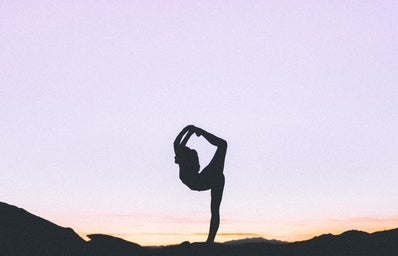It seems that every day we’re bombarded with new food trends and diets telling us they’re the miracle food we need in our lives. From the “superfoods” of avocados and kale to the cleanses that promise to make you “healthier” in a matter of days, there’s always something new we’re told to try.
We all know that McDonalds is bad and veggies are good, but what about everything else in between? What about the thousands of other snacks and diet trends we see every day? With all of the information out there about what’s actually “healthy” or “good” for you, it’s important to understand which ones actually are.
A comprehensive list of every food that’s slightly bad for you is impossible, and it would be ridiculous to avoid everything (or even just a handful of them). But it’s important to know the truth behind some of the today’s most common food misconceptions.
1. Juice cleanses
Juice cleanses promise to detox your digestive system and leave you feeling better than ever. Although juices are a great way to reach your daily intake of fruits and veggies, they’re meant to supplement to your regular meals, not replace them. With juice cleanses, you’re depriving yourself of essential nutrients for your body, especially protein, and consuming way fewer calories than you should be.
According to Jessy McNeil, a registered dietitian who consults at long-term rehab centers and PUMPS Gym in Woburn, Massachusetts, “You’re adjusting your metabolism to become used to the lowered calorie intake, so you may lose weight at first, but once you come off the juice cleanse, your body will gain all the weight back.” Once you start cleansing you may see results quickly, but the shedding pounds are from deprivation rather than healthy weight loss.
Related: 6 Food Groups You Should Be Eating Every Day & Where to Find Them On Campus
2. Protein and snack bars
Absolutely perfect for a snack on the go or for a quick breakfast as you run out the door, granola and protein bars are staples in nearly everyone’s pantry. Usually, they’re viewed as healthy on-the-go snacks or a quick way to repair your muscles after a workout, but many of them are essentially a glorified candy bar.
In fact, some can contain more calories than a meal and more sugar than a Hershey’s bar (Clif Bars have almost a meal’s worth of calories and 21 grams of sugar, while a full Hershey’s bar has even fewer calories and 24 grams of sugar. Yikes!) Also, be sure to stay on the lookout for bars with too many ingredients and more than 12-15 grams of sugar, and only buy the ones that contain food you’ve actually heard of (like oats, nuts, dried fruit and natural proteins).
Or better yet, make your own! McNeil’s advises making your own granola bars with dried fruit, granola and nuts. It’s easier than you think, and they’ll be free of the processed sugars and fats that tend to sneak their way into the majority of granola bars.
3. Gluten-free foods
Many people claim that going gluten-free can help you lose weight. Although that might be the case for some people, if you don’t have an allergy or an intolerance to gluten, there’s no reason you should deprive yourself of all the delicious breads the world has to offer.
“Gluten-free diets are only healthy if you eat food that’s healthy,” says Tygre Patchell-Evans, a sophomore at Loyola Marymount University. “Especially now that gluten-free foods are so popular a lot of them are just as unhealthy as eating normal food.”
Gluten-free diets tend to cut out many unhealthy foods, such as desserts, fried food and most junk foods, which is the reason why many people see weight loss results when going gluten-free. But McNeil says it’s not the lack of gluten that’s good for you, it’s the lack of processed foods. If you continue to have cookies, cake and other typically “unhealthy” foods, even if they’re gluten-free, then cutting out wheat doesn’t have any increased health benefits over leaving it in your diet.
4. Fat-free foods
Believing that fat-free foods and a fat-free diet is a healthy way to eat is just another fad, according to McNeil. Fats are a crucial part of a balanced diet, and if you’re not consuming them, you’re doing more harm than good.
“Omega-3 fatty acids and monounsaturated fats are crucial to cardiac health. There are also essential vitamins that are only able to be absorbed with fat present. These are crucial for our eyes, bones, teeth and heart, and they’re unable to be absorbed by our bodies if we aren’t consuming fats,” says McNeil.
By trying to eat fat-free, you’re missing out on a critical part of your diet that helps your metabolism and improves the texture of your skin and hair. Although the name may sound scary, there’s nothing wrong with healthy fats.
5. 100-calorie snacks
100-calorie snack packs seem like a miracle to help with portion control, but that’s only if you have one. Because we live with such food abundance, it’s often hard to control our portions, and these snacks seem to do them for us.
Just because they’re a small number of calories doesn’t mean that they’re still not unhealthy. A small cookie can be 100 calories, but 100 calories of fruit is much better for you. There’s nothing wrong with indulging every now and again, but keep in mind that they may not be the satisfying snack you hope they are.
This doesn’t mean you shouldn’t ever drink juice or you should eat gluten for every meal. It doesn’t mean eating a protein bar and a fat-free yogurt will kill you. Some foods just aren’t the miracle that they claim to be.


